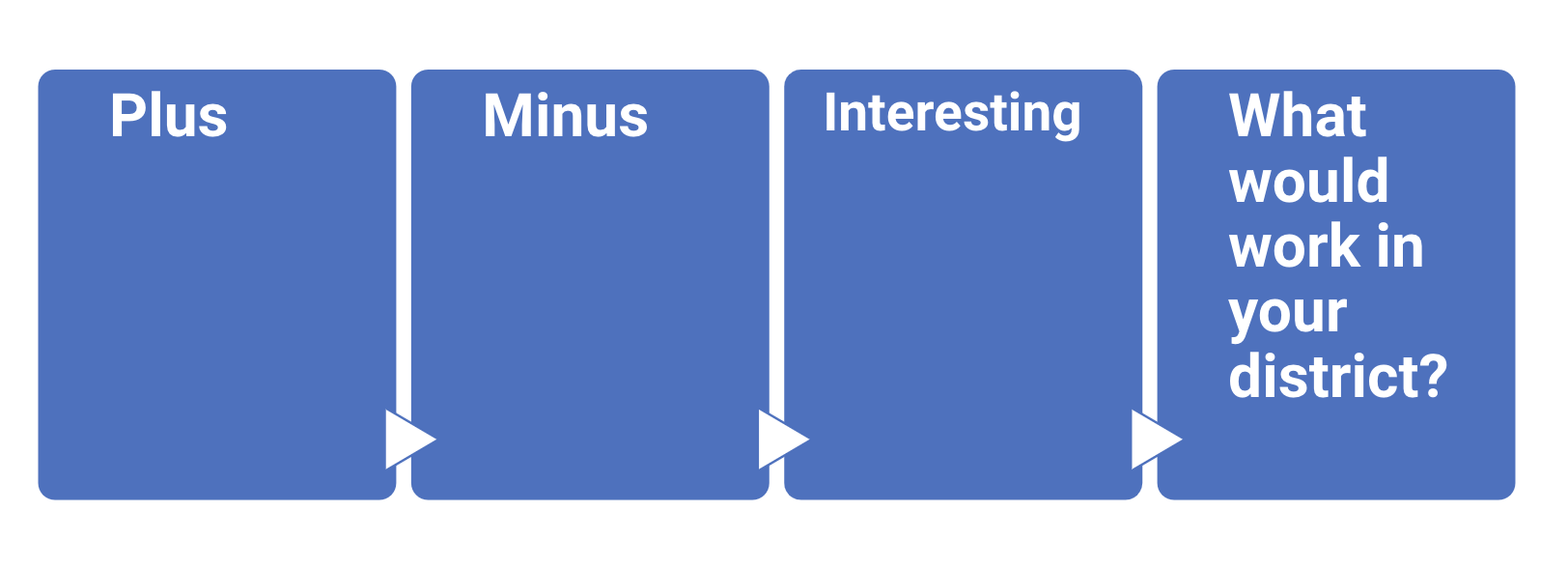MODULE 4.4
REFLECTING ON INDIVIDUAL CONSIDERATIONS, ACCESS & OPPORTUNITY
Objectives
- Discuss factors that warrant further examination within an equitable identification system, particularly related to individual testing profiles, patterns, and policies.
- Showcase curriculum resources and instructional strategies found to be effective in closing the opportunity gap by increasing identification.
- Give examples of successful system/project approaches.
- Give examples of successful curriculum/resource approaches.
- Examine patterns across projects and ideas for implementation.
Learning Tasks
- Watch Goal 4 Module 4 Part I Video
- Complete Goal 4 Module 4 Part I Application Activity (recommended)
- Watch Goal 4 Module 4 Part II Video
- Complete Goal 4 Module 4 Part II Application Activity (recommended)
- Read Goal 4 Module 4 Additional Resources (recommended)
GOAL 4 MODULE 4 Part I
Watch the following video on reflecting on individual considerations within your identification system.
Goal 4 Module 4 Part I Application Activity
Review the example data for achievement and ability or your own data:
Based on the test scores:
- Who would you identify and in which areas?
- Who needs further assessment or consideration and why?
- Does the school psychologist need to be involved?
- What are your next steps?
- How does the examination of individual patterns and profiles contribute to equitable identification?
GOAL 4 MODULE 4 Part II
Watch the following video about evidence-supported access and opportunity programs that students can engage in before identification.
Goal 4 Module 4 Part II Application Activity
Reflect on the following question:
How might talent scouting programs work in your district to support equitable practices?

Goal 4 Module 4 Additional Resources
Bishop, R. S. (1990). Mirrors, windows, and sliding glass doors. Reading in fundamental. https://scenicregional.org/wp-content/uploads/2017/08/Mirrors-Windows-and-Sliding-Glass-Doors.pdf
Lee, L. E., Ottwein, J. K., & Peters, S. J. (2020). Eight universal truths of identifying students for advanced academic interventions. In J. L. Jolly & J. H. Robins (Eds.), Methods & materials for teaching the gifted (5th ed., pp. 61-79). Prufrock Press.
Little, C. A., Adelson, J. L., Kearney, K. L., Cash, K., & O'Brien, R. (2018). Early opportunities to strengthen academic readiness: Effects of summer learning on mathematics achievement. Gifted Child Quarterly, 62(1), 83-95. https://doi.org/10.1177/0016986217738052
Makel, M. C., Peters, S. J., Lee, L. E., Stambaugh, T., McBee, M., McCoach, D. B., & Johnson, K. (2023, January 13). Effective identification through multiple criteria. https://doi.org/10.35542/osf.io/48nv7
Stambaugh, T., Lee, L. E., Makel, M., Peters, S., & Johnson, K. R. (2024). How Does Your Identification System Measure Up? A Guide to Applying the CASA Criteria to Gifted and Talented Identification Systems. Gifted Child Today, 47(4), 246-259. https://doi.org/10.1177/10762175241263983
Peters, S. J., Stambaugh, T., Makel, M. C., Lee, L. E., McBee, M., McCoach, D. B., & Johnson, K. (2023). The CASA criteria for evaluating gifted and talented identification systems: Cost, alignment, sensitivity, and access. Gifted Child Quarterly. https://doi.org/10.35542/osf.io/jf8uc
Peters, S. J., Makel, M. C., Lee, L. E., Stambaugh, T., McBee, M., McCoach, D. B., & Johnson, K. (2023, June 1). What makes for an effective gifted and talented screener? https://doi.org/10.35542/osf.io/sqkae
Stambaugh, T., & Mofield, E. (2016). I, me, you, we. Individuality versus conformity, ELA Lessons for gifted and advanced learners in grades 6-8. Prufrock Press. https://www.routledge.com/I-Me-You-We-Individuality-Versus-Conformity-ELA-Lessons-for-Gifted/Mofield-Stambaugh/p/book/9781618214959
NEXT STEPS
After completing this module, you'll proceed to Module 5: Change management to design systems for Optimal ID.
This work was supported by a grant from the U.S. Department of Education (award number S206A200007 – 21) as part of the Jacob K. Javits Gifted and Talented Students Education Program. The contributors to this site include Kiana Johnson, Lindsay Lee, Matt Makel, Matthew McBee, Betsy McCoach, Scott Peters, & Tamra Stambaugh.